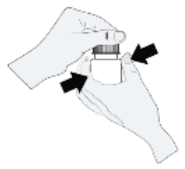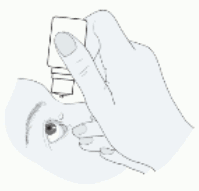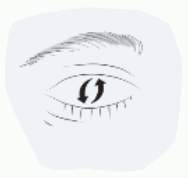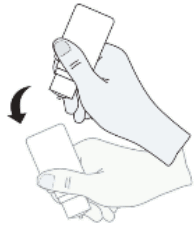EYREIDA Eye drops, solution Ref.[49995] Active ingredients: Bimatoprost
Source: Medicines & Healthcare Products Regulatory Agency (GB) Revision Year: 2022 Publisher: Aspire Pharma Ltd, Unit 4, Rotherbrook Court, Bedford Road, Petersfield, Hampshire, GU32 3QG, UK
4.1. Therapeutic indications
Reduction of elevated intraocular pressure in chronic open-angle glaucoma and ocular hypertension in adults (as monotherapy or as adjunctive therapy to beta-blockers).
4.2. Posology and method of administration
Posology
The recommended dose is one drop in the affected eye(s) once daily, administered in the evening. The dose should not exceed once daily as more frequent administration may lessen the intraocular pressure lowering effect.
Eyreida eye drops solution is a sterile solution that does not contain a preservative.
Paediatric population
The safety and efficacy of Eyreida in children aged 0 to 18 years has not yet been established. No data are currently available.
Hepatic or renal impairment
Eyreida has not been studied in patients with renal or moderate to severe hepatic impairment and should therefore be used with caution in such patients. In patients with a history of mild liver disease or abnormal alanine aminotransferase (ALT), aspartate aminotransferase (AST) and/or bilirubin at baseline, bimatoprost 0.3 mg/ml eye drops (preserved formulation), solution had no adverse effect on liver function over 24 months.
Method of administration
If more than one topical ophthalmic medicinal product is being used, each one should be administered at least 5 minutes apart.
Before instillation of the eye drops:
- Users should be instructed to wash their hands before opening the bottle.
- Users should also be instructed to not use this medicine if they notice that the tamper-proof seal on the bottle neck is broken before they first use it.
- When used for the first time, before delivering a drop to the eye, the patient should practise using the dropper bottle by squeezing it slowly to deliver one drop away from the eye.
- When the patient is confident they can deliver one drop at a time, the patient should adopt a position that is the most comfortable for the instillation of the drops (the patient can sit down, lie on their back, or stand in front of a mirror).
Instillation:
1. The bottle should be held directly below the cap and the cap should be turned to open the bottle. To avoid contamination of the solution, the tip of the bottle must not touch anything.
2. The patient should tilt their head backwards and hold the bottle above their eye.
3. The patient should pull the lower eyelid down and look up. The bottle should be squeezed gently in the middle and a drop should be allowed to fall into the patient’s eye. Please note that there might be a few seconds delay between squeezing and the drop coming out. The bottle must not be squeezed too hard.
Patients should be instructed to seek advice from their doctor, pharmacist or nurse if they are not sure how to administer their medicine.
4. The patient should blink a few times so that the drop spreads over their eye.
5. Instructions 2. – 4. should be repeated for delivery into the other eye, if required. The patient should be clearly instructed if one eye only requires treatment, and if so, which eye is affected.
6. After each use and prior to recapping, the bottle should be shaken once in a downwards direction, without touching the dropper tip, in order to remove any residual liquid on the tip. This is necessary in order to ensure delivery of subsequent drops.
7. At the end of the 28-day in-use shelf life of the medicine, there will be some Eyreida left in the bottle. Using the excess medicine remaining in the bottle after the patient has completed the course of treatment should not be attempted. Patients must not use the eye drops for longer than 28 days after first opening the bottle.
4.9. Overdose
No information is available on overdose in humans; overdose is unlikely to occur after ocular administration.
If overdose occurs, treatment should be symptomatic and supportive. If Eyreida is accidentally ingested, the following information may be useful: In short term oral (by gavage) mouse and rat studies, doses up to 100 mg/kg/day of bimatoprost did not produce any toxicity.
6.3. Shelf life
3 years
After first opening, the product may be stored for a maximum of 28 days. No special storage conditions are required.
6.4. Special precautions for storage
This medicinal product does not require any special storage conditions. For storage conditions after first opening of the medicinal product, see section 6.3.
6.5. Nature and contents of container
Eyreida is presented as a clear, colorless aqueous solution in a white opaque 5 ml LDPE bottle and white Novelia nozzle (HDPE and silicone) and sealed with a white HDPE cap.
The following pack sizes are available: cartons containing 1 or 3 bottles of 3 ml solution.
Not all pack sizes may be marketed.
6.6. Special precautions for disposal and other handling
Any unused medicinal product or waste material should be disposed of in accordance with local requirements.
© All content on this website, including data entry, data processing, decision support tools, "RxReasoner" logo and graphics, is the intellectual property of RxReasoner and is protected by copyright laws. Unauthorized reproduction or distribution of any part of this content without explicit written permission from RxReasoner is strictly prohibited. Any third-party content used on this site is acknowledged and utilized under fair use principles.



